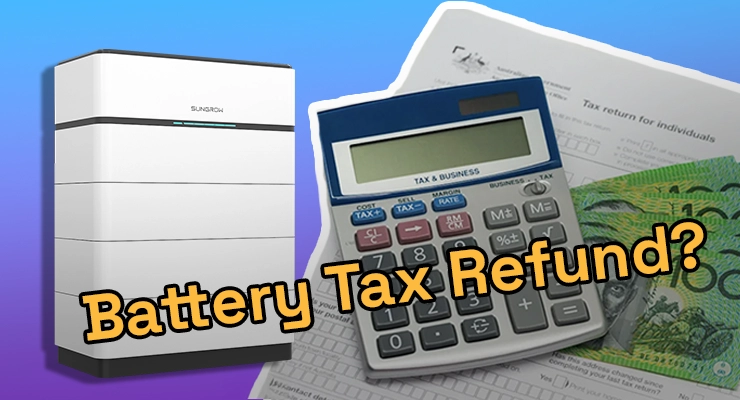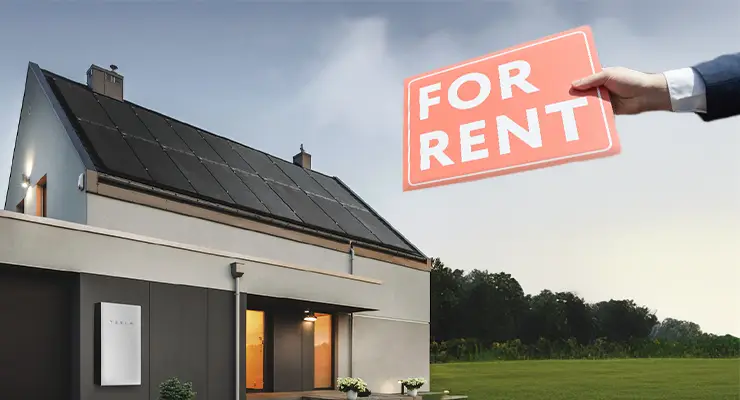Fast read
Yes, a newly installed home battery in a residential investment property absolutely qualifies for depreciation. The Australian Taxation Office (ATO) classifies a home battery system as a 'Plant and Equipment' asset, which falls under Division 40. This allows property investors to claim its decline in value as a tax deduction, but critically, you must have purchased and installed the system new, as depreciation cannot be claimed on second-hand assets in residential properties.
Do home batteries qualify for depreciation as part of investment properties?
As a savvy property investor in Australia, you’re likely always looking for ways to maximise your returns and improve your property’s appeal. Installing a solar battery system is a powerful upgrade that attracts quality tenants and adds value, but it’s a significant financial outlay. A common and crucial question is whether you can soften that financial impact by claiming its wear and tear, or depreciation, as a tax deduction.
The answer is a clear yes, and understanding how it works can significantly improve your investment’s cash flow. It hinges on how the Australian Taxation Office (ATO) categorises different parts of your property.
How the ATO treats your property’s assets: Division 40 vs. Division 43
When it comes to depreciation, the ATO essentially views your investment property in two parts. Getting this distinction right is the key to a successful claim.
First, there is the Division 43 category, also known as Capital Works. This refers to the permanent structure of the building and fixed items. Think of things like the foundations, walls, roof, doors, and built-in kitchen cupboards. Generally, for residential properties built after September 1987, you can claim the wear and tear on these structural elements at a rate of 2.5% per year over a 40-year period.
Second, there is the Division 40 category, known as Plant and Equipment. These are the fixtures and fittings that are more easily removable and have a shorter lifespan than the building itself. This category covers a huge range of items, from carpets and blinds to ovens, air conditioners, and hot water systems. Unlike the flat 2.5% rate for Capital Works, each Plant and Equipment asset has its own ‘effective life’ set by the ATO, and it depreciates at a much faster rate.
Where does a home battery fit in?
A home battery, along with the solar panels and inverter, is classified by the ATO as a Division 40 Plant and Equipment asset. This is excellent news for investors because it means the system can be depreciated over its effective life, generating a valuable annual tax deduction.
The ATO’s ruling for photovoltaic (solar) systems sets an effective life of 20 years. This 20-year timeframe is the basis used to calculate the annual depreciation you can claim for your new battery and solar installation.
The crucial rule: The battery must be new
This is the most important condition for residential property investors. Following legislative changes in 2017, you can no longer claim depreciation on any “previously used” or second-hand Division 40 assets.
This means if you buy an established investment property that already has a solar and battery system, you cannot claim depreciation on that existing system. To be eligible to claim depreciation, you, the current owner, must purchase and install the battery system brand new for the rental property. This rule applies regardless of the property’s age; the asset itself must be new to you.
How is the depreciation on a home battery calculated?
When you claim depreciation on a Division 40 asset like a battery, you generally have two choices for the calculation method.
- Prime Cost method: This is a straight-line method where you claim the same amount of depreciation each year. For an asset with a 20-year life, this would be 5% of its cost per annum.
- Diminishing Value method: This method allows you to claim a higher amount of depreciation in the first few years of the asset’s life. For a 20-year life asset, the rate is 10% per year, calculated on the remaining value of the asset.
Most investors prefer the Diminishing Value method as it accelerates the deductions, providing greater tax relief and improved cash flow sooner. For example, on a new $18,000 battery installation, using the Diminishing Value method could result in a tax deduction of $1,800 in the first full financial year.
The importance of a quantity surveyor
While the principles are straightforward, accurately calculating depreciation across an entire property can be complex. To ensure you are correctly identifying all assets and maximising your legal claims, it is standard practice to engage a qualified Quantity Surveyor.
A quantity surveyor will visit your investment property, identify all Division 40 and Division 43 assets, and prepare a comprehensive depreciation schedule. This schedule is a one-off report that your accountant can use for up to 40 years to lodge your annual tax return, ensuring you claim the correct amount every year.
The other side of the coin: Capital Gains Tax
It is essential to understand that claiming depreciation has an impact when you eventually sell your investment property. The total amount of depreciation you claim over the years reduces the “cost base” of your property for tax purposes.
This means that when you sell, your taxable capital gain will be higher than it would have been if you hadn’t claimed depreciation. However, this isn’t a reason to avoid the claim. The significant cash flow benefit you receive year after year from the tax deductions typically far outweighs the increased Capital Gains Tax liability in the future. It’s a classic “tax saving now versus more tax later” scenario that requires careful consideration but is usually financially advantageous.
Your next steps
In conclusion, investing in a new home battery for your rental property is not just an attractive feature for tenants; it’s also a smart move for your tax return. By correctly classifying it as a Division 40 Plant and Equipment asset and engaging a professional, you can unlock significant annual depreciation deductions.
This can help improve your property’s cash flow and accelerate the return on your investment. If you’re considering this upgrade, discussing it with your accountant and a quantity surveyor is a logical and valuable next step.
Should you need guidance on finding accredited installers for high-quality battery systems like those from Sungrow or AIKO-powered solar, Your Energy Answers provides a free service to connect you with local, vetted experts.




